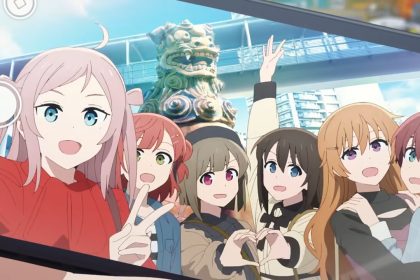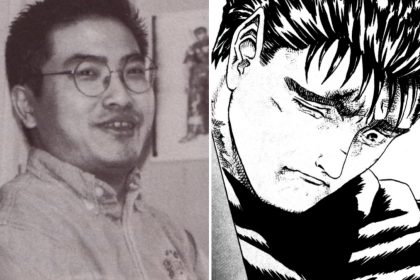Anime, with its captivating storytelling and visually stunning animation, has gained immense popularity around the world. However, as this medium continues to evolve and expand, it is crucial to examine the issues and impact of cultural appropriation within the anime industry. Cultural appropriation refers to the adoption or borrowing of elements from another culture without proper understanding, respect, or acknowledgment. In this article, we will explore the concept of cultural appropriation in the context of anime, discuss its implications for marginalized cultures, examine controversies surrounding the topic, and highlight strategies for fostering cultural exchange and respectful representation.
Understanding Cultural Appropriation in Anime
To understand cultural appropriation in anime, it is important to grasp the concept itself. Cultural appropriation occurs when elements of a culture are taken without proper understanding or respect, often leading to the commodification and misrepresentation of those elements. In the context of anime, cultural appropriation can manifest in various ways, such as the use of traditional clothing, symbols, or rituals from different cultures without proper context or consultation. While cultural appreciation involves learning about and respecting other cultures, cultural appropriation often lacks the necessary depth and understanding, reducing cultural elements to mere aesthetics.
Examples of cultural appropriation in anime can be seen in the portrayal of characters based on real-world cultures without proper research or consultation. This can result in misrepresentation and perpetuation of stereotypes. For instance, some anime series depict characters wearing traditional garments from specific cultures, but fail to accurately represent the historical, social, or cultural significance of those garments. Such depictions can reduce diverse cultures to superficial elements, erasing the richness and complexity of their traditions.
Set in a fictionalized version of historical Japan, “Mushishi” delicately weaves together elements of Japanese folklore, spirituality, and nature. The anime explores the interactions between humans and supernatural creatures known as “mushi.” With its stunning art style and atmospheric storytelling, “Mushishi” showcases a deep appreciation for Japanese culture and its connection with the natural world.
Another film by Hayao Miyazaki, “Princess Mononoke” explores the delicate balance between humans and nature. Set in a feudal-era Japan infused with elements of fantasy, the anime addresses themes of environmentalism, indigenous spirituality, and the consequences of human greed. Through its complex characters and thought-provoking narrative, “Princess Mononoke” offers a deep respect for nature and the interconnectedness of all living beings.
Further Readings: Intercultural Exchange Through the World of Anime and Manga
Impact on Marginalized Cultures
Cultural appropriation in anime can have a significant impact on marginalized cultures. When elements of a culture are taken out of context or misrepresented, it can disrupt the cultural integrity of the marginalized group. This can lead to the erasure of authentic narratives and the perpetuation of harmful stereotypes. For example, when an anime series appropriates sacred symbols or rituals from a particular culture without proper understanding or respect. Without proper research, it could diminishes the cultural significance of those symbols. To some extent it can be deeply offensive to the community from which they originate.
Furthermore, cultural appropriation can reinforce power imbalances and contribute to the marginalization of already oppressed groups. When cultural elements are commodified and divorced from their original cultural context, it can perpetuate the idea that marginalized cultures are merely trendy or exotic commodities to be consumed. This not only erases the contributions and struggles of marginalized communities. This also contributes to reinforces harmful stereotypes and reduces their cultures to superficial and one-dimensional representations.
Controversies Surrounding Cultural Appropriation in Anime
Cultural appropriation in anime has sparked controversies and public discourse. Certain anime series and character designs have faced backlash for their inappropriate and insensitive portrayals of different cultures. There have been instances where characters have been depicted wearing traditional clothing or accessories from cultures outside of Japan. Without any proper research or respect for the significance of those cultural elements, it can lead to some mistakes. These portrayals can perpetuate stereotypes and contribute to a distorted understanding of the cultures being depicted.
These controversies have sparked debates about the responsibility of creators and the role of cultural sensitivity in the anime industry. Some argue that creators should conduct thorough research and consult with cultural experts to ensure accurate and respectful representations. Others believe that consumers should actively support and promote anime that showcases cultural diversity and respectful representation.
It is essential to foster cultural exchange and promote respectful representation in anime. Rather than appropriating elements from different cultures, creators can engage in meaningful cultural exchange by conducting thorough research, consulting with experts, and seeking authentic collaborations. By gaining a deeper understanding of diverse cultures, creators can create more nuanced and respectful portrayals in their anime works.
Search for a Proper Approach
One way to support respectful representation is by encouraging consumers to be critical and discerning in their choices. By actively seeking out anime that showcases cultural diversity and respectful depictions, viewers can contribute to the demand for responsible and inclusive content. Additionally, supporting and promoting anime that involve cultural consultants or collaboration with cultural experts can help ensure that accurate and respectful representations are being made.
Collaboration and consultation with cultural experts and artists from the cultures being depicted can provide valuable insights and guidance. This collaborative approach can help creators in anime to navigate the fine line between appreciation and appropriation.
Conclusion
Cultural appropriation in anime is a complex issue that warrants careful consideration. While anime continues to captivate audiences worldwide, it is crucial to recognize the impact of cultural appropriation on marginalized cultures. Through misrepresentation, erasure, and perpetuation of stereotypes, cultural appropriation in anime can reinforce power imbalances and perpetuate harm. However, by fostering cultural exchange, promoting respectful representation, and encouraging collaboration, the anime industry can become a powerful platform for celebrating cultural diversity and fostering understanding.
In conclusion, responsible consumption and creation of anime are necessary to address the issues of cultural appropriation. By actively seeking out and supporting anime that showcases cultural diversity, viewers can contribute to the demand for respectful representation. Creators, on the other hand, have a responsibility to conduct thorough research. They can also consult with cultural experts, and engage in meaningful collaborations. By working together, we can ensure that anime becomes a medium that bridges cultures. In the end, anime can also promotes empathy, and celebrates the beauty of diversity.













